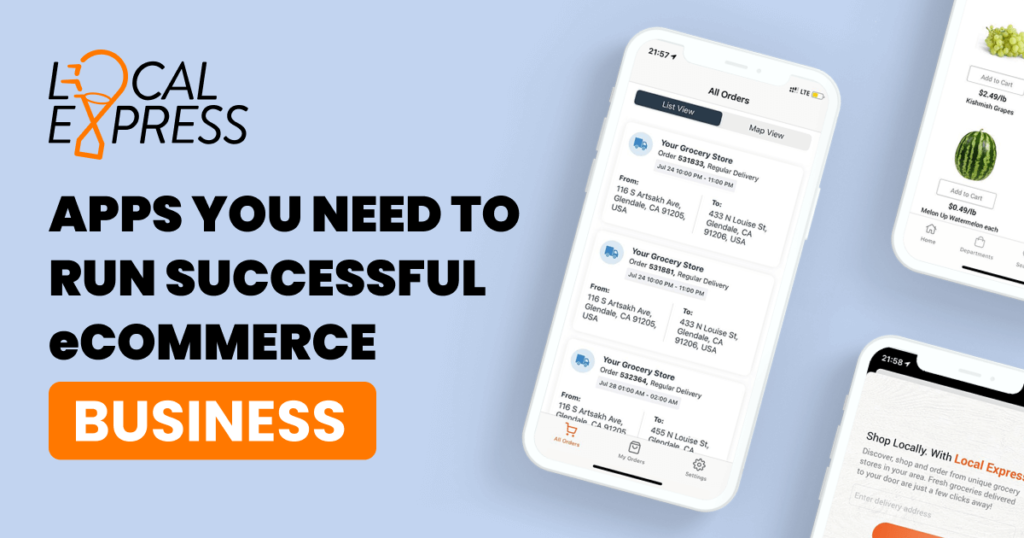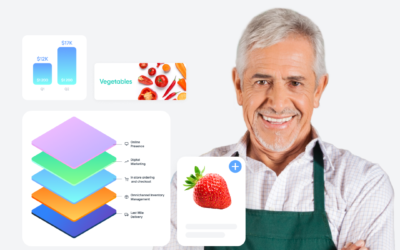
The overnight shift to socially distanced retail proved to be a great impetus for companies small and large to make the shift to a digital or hybridized version of their physical locations. Grocery stores have proved no exception – if anything, the focus on “essential” services such as groceries and food delivery have shown the need for digitization in a long-thought-of as purely brick and mortar. In the search to find the best online grocery shopping app, business owners have discovered they need a platform (or platforms) that can perform several different features.
With “anchor store” retail now changing forever, the next generation of food retailers will maximize their profits and grow their customer base during the delivery renaissance. Leveraging technology is the key milestone on this journey. These are some apps to check out.
Store Management App
Our store management app allows you to create item categories that are infinitely customizable to fit your customer’s needs and adapt to the times as needed. Take, for instance, the “Incense | Agarbathi | Dhoop | Sage” section of Bhanu Indian Grocery & Cuisine’s Local Express page – or order a tailored cut of fine Japanese Wague from Electric City Butcher’s page.
Local Express has inventory management tools, namely our Partner App that help you manage your inventory even if you have thousands of items in your store. Pair your items with high-quality stock images accessible for free within our database of 1.5 million product/SKU photos as part of your subscription. This means no taking photos of stock yourself. And if you have a specialty or unique item that you can’t find a photo of, you can take a picture yourself using the Local Express Store App, and we’ll edit your photos to look top-notch and send them back.
Delivery Management App
Local Express’s delivery management app makes it easy for even small neighborhood corner shops to compete with the big guys.’ Specialty grocers seeking to expand their sales territory will be pleased to know that the current delivery radius for Local Express deliveries is 15 miles – much greater than Doordash, UberEats, and Grub Hub. Your job as a grocer is to make sure that customers are able to find the products they’re looking for and add them to their order – Local Express takes care of the delivery end of things.
Local Express has its own dispatch team that ensures your products are delivered on time to your customers. Local Express provides a “Driver App” that allows you to track drivers easily. It also has a built-in tool to text or call the driver via the Driver App.
“In the past, what’s happening is we’ve done business with Doordash for hot food orders. The order goes first to Doordash, and then Doordash sends us an order, but the order doesn’t go directly to our point of sale system. Our cashiers would have to enter that manually – they could code in the wrong item or even forget to use the POS system altogether, so we had no idea how much we were selling,” said Jonas C. Veneracion who oversees the IT systems at specialty grocery chain Seafood City’s 33 national and international locations.
“Local Express eliminated that,” he added. “We wanted the whole process done seamlessly, and with Local Express, all the orders go to our backend. This integration is vital – there’s no more need for human intervention.”
Perishable and Deli Good Inventory Management App
Local Express also has a “Deli” module that allows stores to sell prepared meals, which has proven a profitable department for grocery stores. You can use this feature paired with Local Express marketing tools that integrate with your own email automation software (like Mailchimp, for instance) to market to customers in your database who’ve made recent purchases.
Have a customer who used to come in and order a turkey sandwich every time they shopped in your store pre-pandemic, but now they haven’t ordered from your deli counter in a long time? Market to them directly by emailing her a coupon and get their business back!
Using Local Express allows retailers to “own” their customer data in this way: Whenever you take orders via a third-party service provider like DoorDash or GrubHub, you don’t have access to customer data. Plus, you can potentially save money by customers ordering via your “own” app, vs. paying a large commission to a third party.
For more tips on improving your operations, explore our blog.











